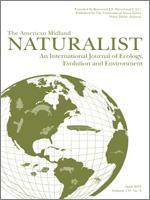Determining the factors that constrain the distribution of a species may have important management and conservation implications. We quantified space use and cover selection of kit foxes (Vulpes macrotis) at the northern periphery of their distribution in southeastern Oregon from 2014 to 2015. We used locations from GPS‐collared foxes to estimate seasonal utilization distributions (UD) with the biased random bridge approach. We also estimated seasonal intensity distributions (ID) to identify areas with increased residence time per visit and recursion distributions (RD) to identify areas that are frequently visited. Mean 95% UD area for all foxes was 37.41 km2 during breeding and gestation, 21.44 km2 during pup-rearing, and 20.11 km2 during dispersal. Male UD area differed among seasons, where UDs during breeding and gestation (x̄ = 37.68 km2) were larger than during dispersal (x̄ = 18.70 km2) but not during pup-rearing (x̄ = 21.44 km2). Our seasonal 95% UD area estimates are among the highest reported for kit foxes, suggesting peripheral areas may not meet ecological requirements as well as core areas. Second-order selection ratios revealed foxes selected desert scrub and sparsely vegetated cover across all seasons at the population level. Within 30% IDs, mean third-order selection ratios showed selection of sparse vegetation with seasonal selection of desert scrub cover. Within 30% RDs mean selection ratios showed selection of sparse vegetation and nonnative grasslands throughout the year. At all levels there was individual variation in patterns and strength of selection. We contend a heterogeneous landscape with sparsely vegetated and desert scrub cover (i.e., intensive foraging areas and den sites) mixed with grasslands (i.e., rapid foraging areas) provides suitable habitat for kit foxes. Identifying patterns of resource use and selection of this species at their distributional periphery will improve conservation strategies for the kit fox in Oregon and other portions of their range.
How to translate text using browser tools
1 April 2018
Space Use and Cover Selection of Kit Foxes (Vulpes macrotis) at Their Distributional Periphery
Carolyn A. Eckrich,
Matthew J. Warren,
Darren A. Clark
ACCESS THE FULL ARTICLE
It is not available for individual sale.
This article is only available to subscribers.
It is not available for individual sale.
It is not available for individual sale.

The American Midland Naturalist
Vol. 179 • No. 2
April 2018
Vol. 179 • No. 2
April 2018




